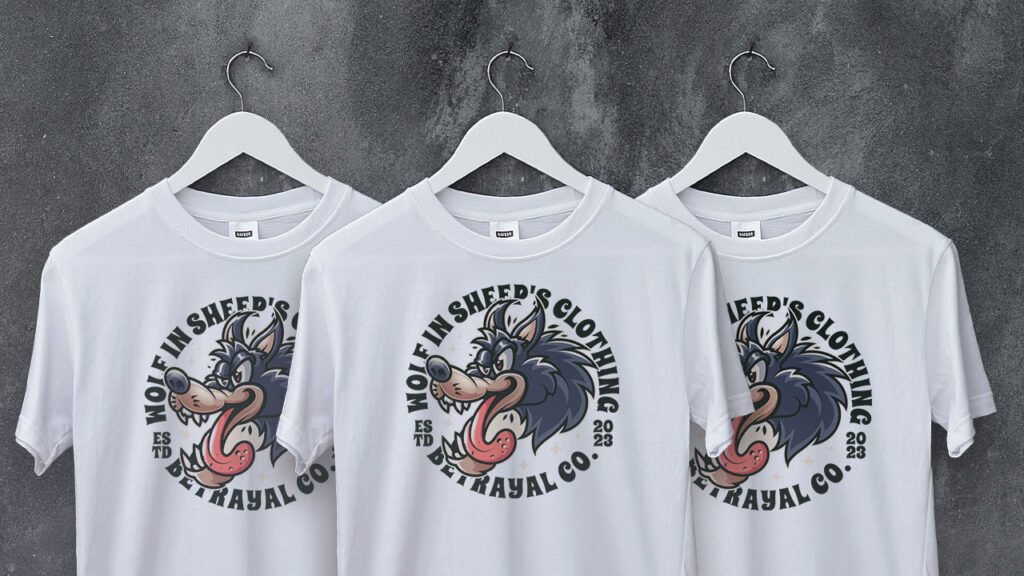DTF printing, also known as direct-to-film transfer printing, has evolved rapidly since its inception in 2020. From the technology behind DTF to the equipment available, every detail matters in achieving perfect DTF transfers. If you’re considering purchasing DTF equipment, here is a comprehensive guide on the crucial equipment you’ll need.

DTF Printing: The Evolution Of Equipment
When DTF technology was first introduced, most printers hailed from China. However, those initial machines often lacked the quality and instructional materials required for a seamless printing process. Fast-forward to 2023, and we are starting to see many reputable brands launching their own DTF printers. That is taking production outside of China and is promising superior quality. Most DTF equipment and consumable supplies are still manufactured in China, which has kept the price for equipment low when compared to other digitally printed decoration processes.
DTF Printing: Desktop vs 24” DTF Printers
Direct-to-Film printers are set up to print onto either 12, 24, or 48-inch wide film. The bigger the size of the printer, the larger the roll of film and speed at which it can print. Almost every DTF equipment setup consists of a printer and a shaker/dryer for applying adhesive powder and curing the print. DTF printers require that the exhaust fumes be ventilated which can be done through an air filtration system or exhausting out of the building.
Most shops that sell DTF transfers have a 24-inch wide printer and shaker setup. The majority of 24-inch printers use either two or four print heads. Half of the print heads are used for white and the other half are used with CMYK. A 4-head printer can typically print around 100 square feet an hour. When a printer prints at a faster speed. there should always be an operator nearby to ensure there are no printhead strikes or running out of powder.
For those with limited space or smaller production needs, A3 or Desktop DTF Printers offer an alternative. They accommodate a 12-inch wide film, half of the 24-inch counterparts. Initially, these printers were a hit in the market. However, over time users have reported challenges in achieving consistent print quality. It’s often noted that while they might be more economical and space-saving, they can be trickier to use, leading some businesses to outsource their transfer needs.
DTF Printing: Print Heads
The heart of a DTF printer lies in its print heads. These determine both the quality and speed of your prints. They typically come in configurations of two, four, or eight heads. The more heads, the faster – and sometimes richer the print – due to a wider color spectrum. Another benefit of having more heads is that if a head ever goes down, there is a backup that can keep the printer printing, but at a slower speed.
Keep in mind that these print heads, borrowed from DTG technology, are the most expensive part of your DTF printer. Moreover, the ink used in DTF printing is water-based. This makes it prone to drying, especially in low-humidity conditions. To prevent ink from drying and clogging the print head, maintain a humidity level of 50 percent or above in the room housing your printer.
DTF Printing: Powder Shaker Dryers
Once the DTF film is printed, it requires adhesive powder application, followed by heat curing. This is where powder shaker dryers come in. Because shaker dryers must use heat to cure the ink, they require a lot of electricity, typically 220 volts.
How do they work? The freshly printed film enters the shaker dryer. Here, adhesive powder is sprinkled over the wet ink. It then passes through a conveyor dryer similar to those used in screen printing. However, the shaker dryer also performs the additional task of shaking off excess adhesive powder before curing.
When choosing a shaker dryer, size does matter. Longer conveyor chambers, sometimes over 14 feet, allow for a more gradual curing process. This is often preferable to exposing the ink to intense heat in a shorter chamber. Modern shaker dryers come with features like:
- Heated Guide Plate: Semi-dries the wet ink before powder application.
- Positive Inversion: Uses a squeegee to push powder onto the film.
- Shaker Blade: Removes excess powder.
- Front and Back Belt Suction: Ensures the film remains flat during the process.
- Cooling Fans: Quickly cools the cured ink.
- Take Off: Conveniently rolls up the printed film.
DTF Printing: Fume Extractors
Safety first! The curing process in DTF printing releases vapors that need proper management. Fume extractors play a vital role in this. They work like vacuums, sucking up the vapor during the curing process. This vapor then passes through carbon filters, ensuring a safer working environment.

In Conclusion
Direct-to-Film printing has quickly made a huge impact on the custom apparel decoration industry. Almost overnight the majority of decoration shops have purchased their own DTF equipment. That, or they’re outsourcing DTF transfers to another shop. DTF equipment is evolving every day and is truly still in the infancy stages when compared to other decoration processes. Producing high-quality DTF transfers starts with having the right equipment, installation and technical support.
- DTF Printing: A Beginners Guide To Production Setup
- T-Shirt Dye Sublimation Printing With Rob Super
- 15 Must-Have Screen Printing Website Features
- The Staying Power Of Athleisure In The Apparel Decoration Industry
- How To Capture The School Market For Your Screen Printing Business
- Sublimation Printing: A Step-By-Step Troubleshooting Guide
- What Is Direct-To-Film Transfer Printing? A Guide For Apparel Print Shops
- Digitees Reveals The Amazing Power Of Customer Reviews For Print Shops
- Boost Productivity With DTF Printing Business Management Software
- Local Search Optimization: Grow Your DTF Printing Business



